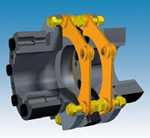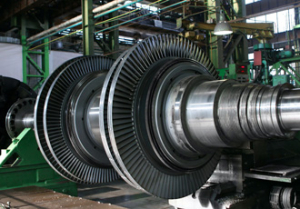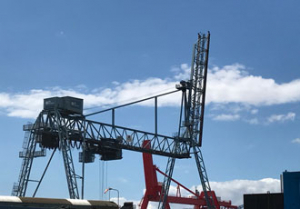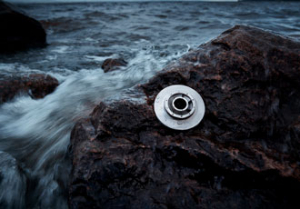Torque Limiting Clutches & Shaft Couplings
28th October 2008
Source:
Mayr Transmissions Ltd

Over the last 30 years, electrical drives have continued to become more compact, quicker, capable of better performances and more dynamic. Of course, torque limiting clutches and shaft couplings had to follow this trend. Additionally, there have been a multitude of fundamental new developments for torque limiting clutches, often initiated by highly-specific, application-orientated demands.
More than 40 years ago, mayr power transmission launched the first electrical switch-off torque limiting clutch (EAS) onto the market.
The successful era of today's standard positive-locking mechanical torque limiting clutches began more than 40 years ago. The first EAS-clutches came onto the market in 1963. These ball detent torque limiters were subject to backlash. The torque was transmitted via keyways and claws from the hub onto the output-side. Keys were the standard shaft-hub connections. As electrical drive technology developed in the direction of higher speeds and higher dynamic ranges, the demand for backlash-free torque transmission became increasingly important. mayr power transmission, as pioneers and market leaders for mechanical torque limiting clutches, quickly reacted to this new trend and have continued to work according to these principles. In 1980, the first backlash-free torque limiting clutch was introduced. A spring steel disk screwed together alternately with the hub and the output flange was responsible for torque transmission. Backlash-free clamping elements replaced the shaft-hub connection.
In 1987, the EAS-NC was introduced onto the market with a completely new, patented, long-term backlash-free and ingeniously simple transmission principle still used today on many mechanical torque limiting clutches. The torque is transmitted via balls which simultaneously engage into the hub and output flange recesses. Cup springs pre-tension the balls via a ring. The level of spring force applied is proportional to the transmittable torque. This principle remains backlash-free even if the recesses become worn. On the EAS-NC, mayr power transmission also used cup springs with falling characteristic curves for the first time. With ordinary cup springs, the torque first increases on overload when the clutch disengages due to an increase in tension on the springs, until the ball detents are no longer engaged. Only then does the torque decrease to a harmless residual torque. On springs with a falling characteristic curve, the torque decreases immediately, as the force reduces as the pre-tension increases.
At the beginning of the 80's, parallel to these torque limiting clutches, mayr power transmission launched further completely new Type series onto the market. Several demands from machine manufacturers could not be covered by the standard clutches then in existence. Manufacturers needed, for example, the overload torque to adapt itself to the production process during operation. At the same time, it should be possible to connect or to switch off system parts synchronously and process-controlled. These demands led to the development of the switchable and controllable positivelocking torque limiting clutches EAS-Sm and EAS-Zr. At the same time, the EAS-element clutches and the EAS-elements were launched onto the market. With these products, it became possible for the first time to limit nearly any level of torque without destruction by varying the element number and arrangement. They are, for example, an ideal replacement for the inaccurate and high-maintenance shear pin clutches which formerly dominated heavy industrial engineering, and can be used in mining, rolling mills, tunnel driving machines, large extruders and shredders. In recycling and environmental technology, too, the element clutches are becoming more and more popular.
Limitation of the torque generally prevents expensive damage and downtimes during operation malfunctions. On crank drives, this protective measure may not be sufficient. Crank drives convert rotational motor movement into linear movement. In their dead centres, they develop enormous forces, even at small torques. Reliable protection against damage is only possible here if the linear force is directly limited. In the late 80's, mayr power transmission introduced the EAS-axial as a protective element onto the market, and it fulfils this task perfectly. It is capable of limiting tension and pressure forces and can be adapted individually to the respective system situation via variable lengths of connecting rods and pressure rods.
During further development of torque limiting clutches, the increase in performance density and speed will continue to be placed at the top of the system specifications. Interesting development successes would also be in the direction of installation-friendly shaft-hub connections. Recording disengagement movement on overload and the processing of the electrical signals thereby produced are points still promising development potential.
The development of shaft couplings almost always took place in the shadow of drive machines, with which they were preferably used. In the service area of servo drives, they were affected by constantly increasing speeds, performance density, higher dynamic ranges and early demands for backlash-free torque transmission. Around 20 years ago, servo drives began to occupy application fields which had previously been reserved for other drive types for financial reasons. In this way, the importance of backlash-free shaft couplings has increased. The traditional key connection has rapidly lost ground against this competition. One of the first backlash-free shaft-hubconnections to be used widely was the securement using clamping elements. However, these elements were problematic, in particular during de-installation. Therefore, they were replaced successively by other shaft connections such as cone bushings, clamping hubs and shrink disk hubs.
Among other things, modern servo technology had an effect on the development of the ROBA-DS spring steel disk coupling, which was introduced in 1997 at the Hannover Messe and which offers several special characteristics. The patented connection of the disk packs via conical recesses allows complete backlash-free operation, not only up to the nominal torque, but even up to the maximum permitted torque. Therefore, in contrast to standard disk pack couplings, small constructional sizes can be used, with their respective advantages for mass moments of inertia, dynamic range and speed behaviour. Further developments were influenced strongly by machine tool construction. In portal milling machines, for example, relatively large distances had to be bridged. Ways had to be found to increase the bend-critical speed on the couplings at increased drive speeds. One solution is thin-walled, depressed intermediate sleeves made of steel. Today, intermediate sleeves made of carbon fibre reinforced plastics (CRP) are becoming increasingly popular. In the past, these materials were reserved for large couplings, e.g. for cooling towers or ship's engines. CRP sleeves are also suitable for normal applications due to their unique technical characteristics under high demands. They are exceptionally light and therefore have a very low mass moment of inertia, thereby proving suitable for very high speeds.
The future development of shaft couplings will continue to be influenced by performance density, dynamic range and speed. In addition, many applications are showing a trend towards high rigidity at simultaneously reduced misalignment. Speeds of 30,000 revolutions per minute and above are today not unusual. Therefore, the issue of balance quality will also become increasingly important.
The successful era of today's standard positive-locking mechanical torque limiting clutches began more than 40 years ago. The first EAS-clutches came onto the market in 1963. These ball detent torque limiters were subject to backlash. The torque was transmitted via keyways and claws from the hub onto the output-side. Keys were the standard shaft-hub connections. As electrical drive technology developed in the direction of higher speeds and higher dynamic ranges, the demand for backlash-free torque transmission became increasingly important. mayr power transmission, as pioneers and market leaders for mechanical torque limiting clutches, quickly reacted to this new trend and have continued to work according to these principles. In 1980, the first backlash-free torque limiting clutch was introduced. A spring steel disk screwed together alternately with the hub and the output flange was responsible for torque transmission. Backlash-free clamping elements replaced the shaft-hub connection.
In 1987, the EAS-NC was introduced onto the market with a completely new, patented, long-term backlash-free and ingeniously simple transmission principle still used today on many mechanical torque limiting clutches. The torque is transmitted via balls which simultaneously engage into the hub and output flange recesses. Cup springs pre-tension the balls via a ring. The level of spring force applied is proportional to the transmittable torque. This principle remains backlash-free even if the recesses become worn. On the EAS-NC, mayr power transmission also used cup springs with falling characteristic curves for the first time. With ordinary cup springs, the torque first increases on overload when the clutch disengages due to an increase in tension on the springs, until the ball detents are no longer engaged. Only then does the torque decrease to a harmless residual torque. On springs with a falling characteristic curve, the torque decreases immediately, as the force reduces as the pre-tension increases.
At the beginning of the 80's, parallel to these torque limiting clutches, mayr power transmission launched further completely new Type series onto the market. Several demands from machine manufacturers could not be covered by the standard clutches then in existence. Manufacturers needed, for example, the overload torque to adapt itself to the production process during operation. At the same time, it should be possible to connect or to switch off system parts synchronously and process-controlled. These demands led to the development of the switchable and controllable positivelocking torque limiting clutches EAS-Sm and EAS-Zr. At the same time, the EAS-element clutches and the EAS-elements were launched onto the market. With these products, it became possible for the first time to limit nearly any level of torque without destruction by varying the element number and arrangement. They are, for example, an ideal replacement for the inaccurate and high-maintenance shear pin clutches which formerly dominated heavy industrial engineering, and can be used in mining, rolling mills, tunnel driving machines, large extruders and shredders. In recycling and environmental technology, too, the element clutches are becoming more and more popular.
Limitation of the torque generally prevents expensive damage and downtimes during operation malfunctions. On crank drives, this protective measure may not be sufficient. Crank drives convert rotational motor movement into linear movement. In their dead centres, they develop enormous forces, even at small torques. Reliable protection against damage is only possible here if the linear force is directly limited. In the late 80's, mayr power transmission introduced the EAS-axial as a protective element onto the market, and it fulfils this task perfectly. It is capable of limiting tension and pressure forces and can be adapted individually to the respective system situation via variable lengths of connecting rods and pressure rods.
During further development of torque limiting clutches, the increase in performance density and speed will continue to be placed at the top of the system specifications. Interesting development successes would also be in the direction of installation-friendly shaft-hub connections. Recording disengagement movement on overload and the processing of the electrical signals thereby produced are points still promising development potential.
The development of shaft couplings almost always took place in the shadow of drive machines, with which they were preferably used. In the service area of servo drives, they were affected by constantly increasing speeds, performance density, higher dynamic ranges and early demands for backlash-free torque transmission. Around 20 years ago, servo drives began to occupy application fields which had previously been reserved for other drive types for financial reasons. In this way, the importance of backlash-free shaft couplings has increased. The traditional key connection has rapidly lost ground against this competition. One of the first backlash-free shaft-hubconnections to be used widely was the securement using clamping elements. However, these elements were problematic, in particular during de-installation. Therefore, they were replaced successively by other shaft connections such as cone bushings, clamping hubs and shrink disk hubs.
Among other things, modern servo technology had an effect on the development of the ROBA-DS spring steel disk coupling, which was introduced in 1997 at the Hannover Messe and which offers several special characteristics. The patented connection of the disk packs via conical recesses allows complete backlash-free operation, not only up to the nominal torque, but even up to the maximum permitted torque. Therefore, in contrast to standard disk pack couplings, small constructional sizes can be used, with their respective advantages for mass moments of inertia, dynamic range and speed behaviour. Further developments were influenced strongly by machine tool construction. In portal milling machines, for example, relatively large distances had to be bridged. Ways had to be found to increase the bend-critical speed on the couplings at increased drive speeds. One solution is thin-walled, depressed intermediate sleeves made of steel. Today, intermediate sleeves made of carbon fibre reinforced plastics (CRP) are becoming increasingly popular. In the past, these materials were reserved for large couplings, e.g. for cooling towers or ship's engines. CRP sleeves are also suitable for normal applications due to their unique technical characteristics under high demands. They are exceptionally light and therefore have a very low mass moment of inertia, thereby proving suitable for very high speeds.
The future development of shaft couplings will continue to be influenced by performance density, dynamic range and speed. In addition, many applications are showing a trend towards high rigidity at simultaneously reduced misalignment. Speeds of 30,000 revolutions per minute and above are today not unusual. Therefore, the issue of balance quality will also become increasingly important.
Similar articles
More from Mayr Transmissions Ltd
- Couplings provide accurate measuring results 22nd March 2016
- Backlash-free ROBA-guidestop safety brakes available in new construction sizes 2nd July 2015
- Backlash-Free ROBA-Guidestop Safety Brakes Available In New Construction Sizes 11th June 2015
- Next-generation capping heads 15th January 2015

-(1)ed.jpg)










Write a comment
No comments